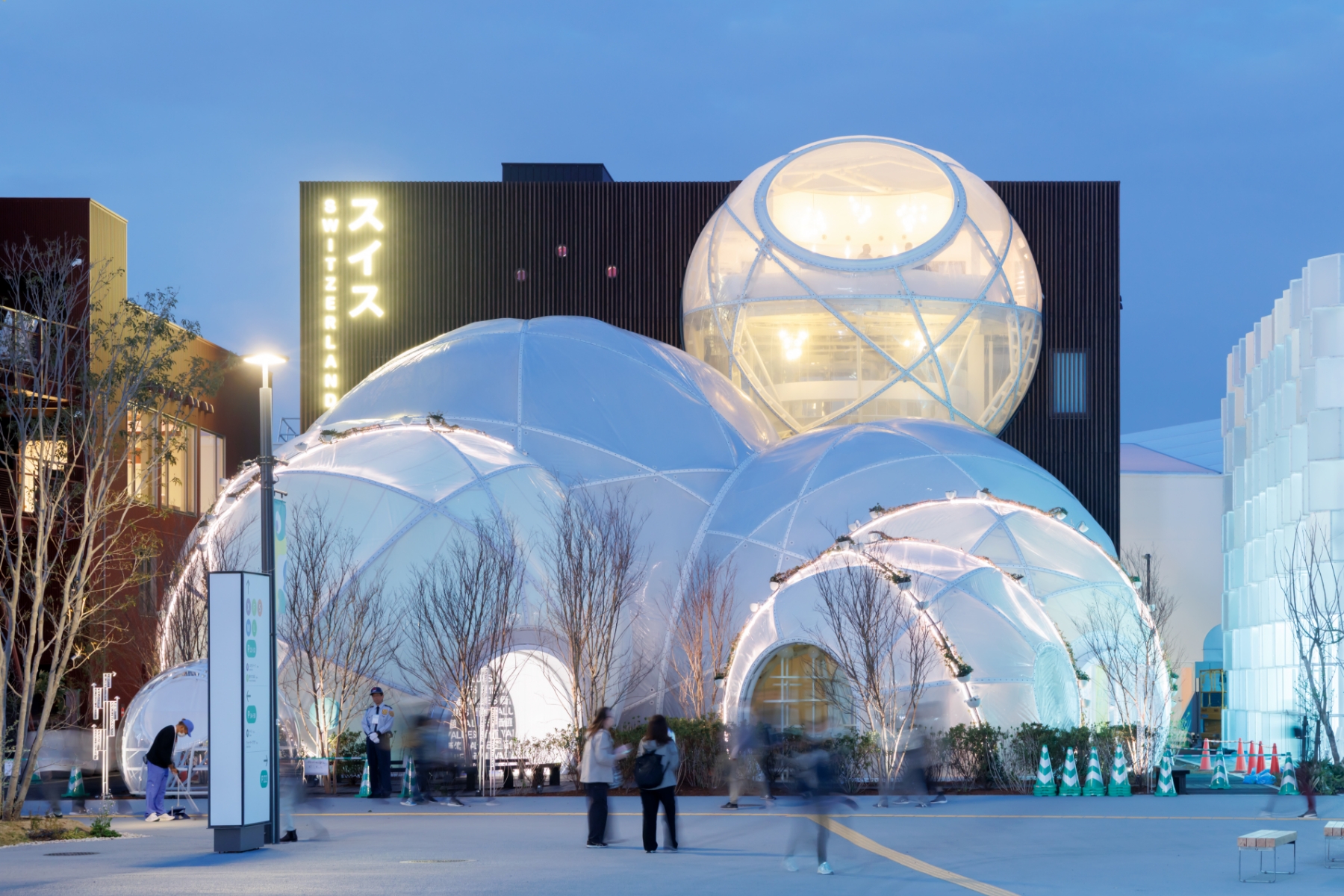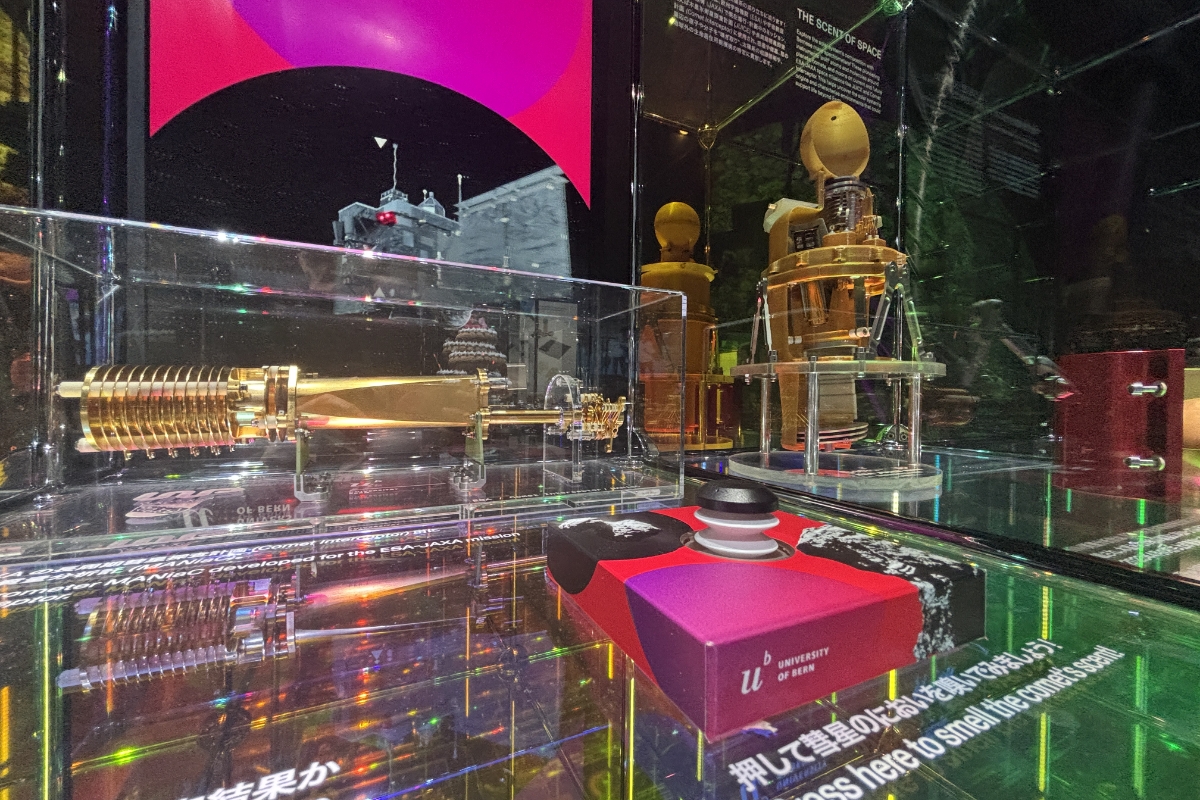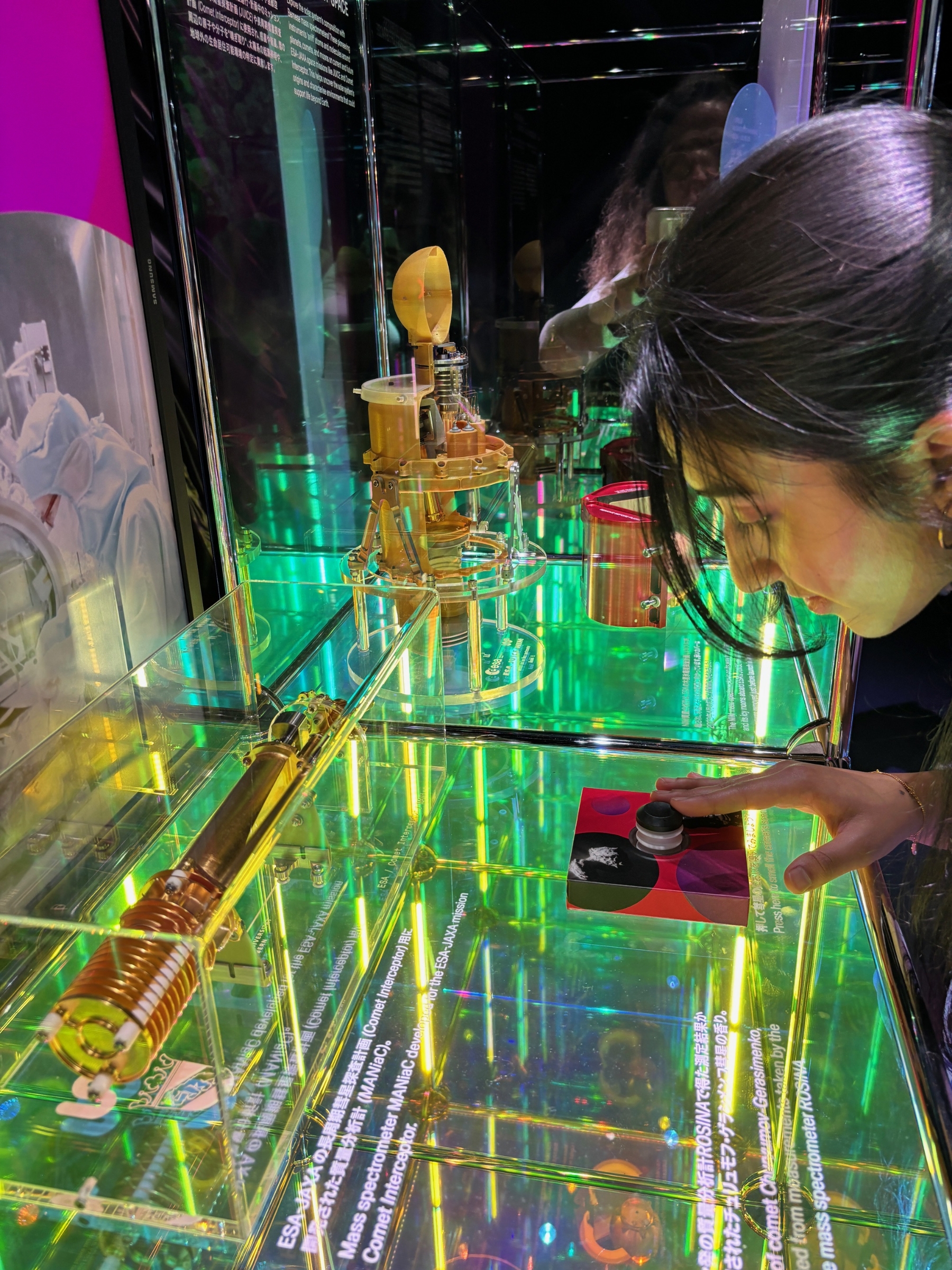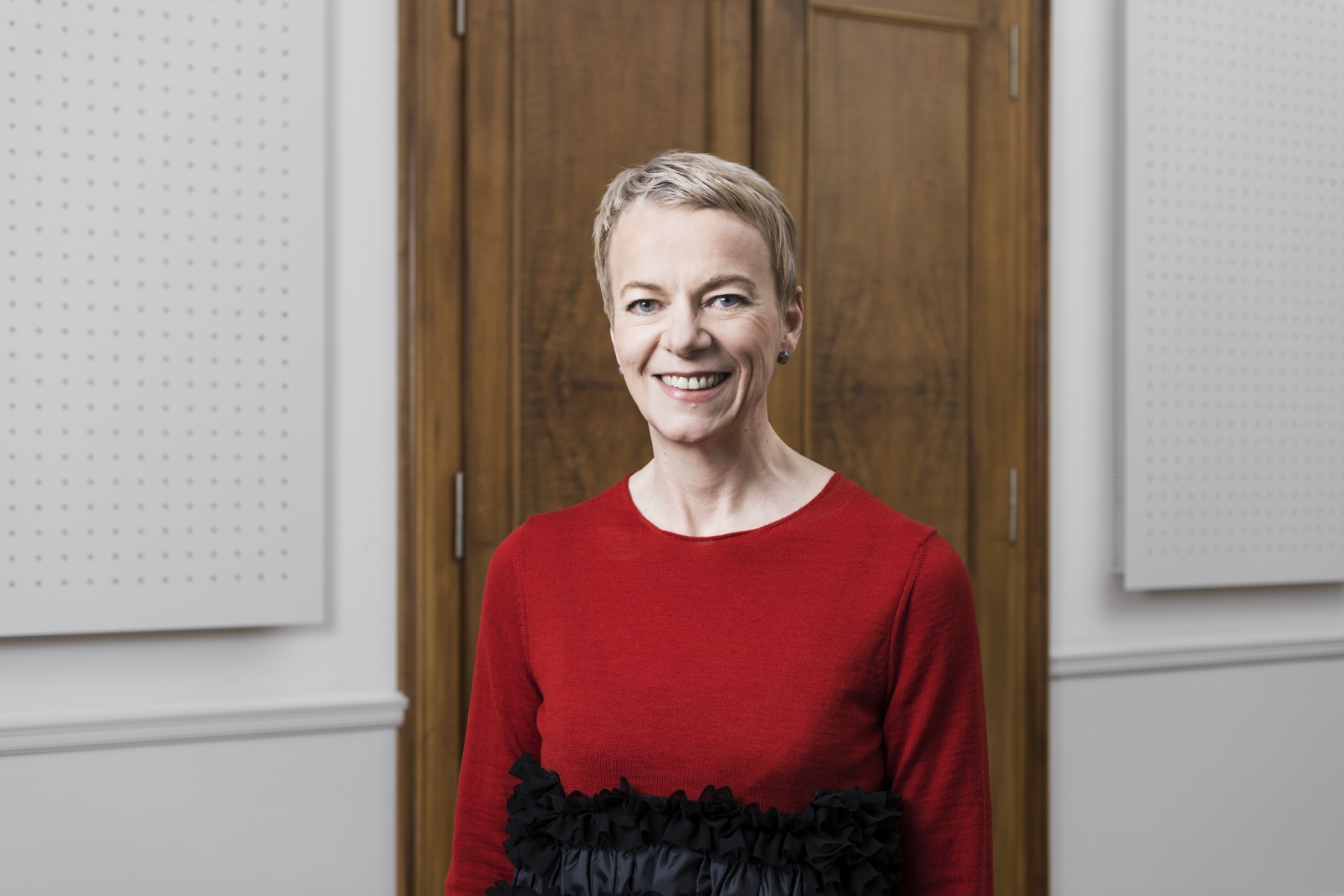The University of Bern at Expo 2025 in Osaka
The University of Bern is represented in the Swiss Pavilion at Expo 2025 in Osaka, which officially opened yesterday. As part of the “AUGMENTED HUMAN” exhibition, two Bernese space instruments that are flying on international missions into space can be seen in the Swiss Pavilion. And the public has the opportunity to learn what comets really smell like.
The motto of Expo 2025 in Osaka, Japan, is “Designing Future Society for Our Lives”. The theme of the Swiss Pavilion, “From Heidi to High-Tech”, reflects Switzerland's development from its iconic Alpine heritage to a globally recognized center of cutting-edge technology.
The University of Bern is showcasing its latest space instruments at Expo 2025 in Osaka. On display are two mass spectrometers developed for major missions of the European Space Agency (ESA) and the Japan Aerospace Exploration Agency (JAXA). Virginia Richter, rector of the University of Bern, will travel to Osaka as part of the official Swiss delegation. “Since its participation in NASA's Apollo missions to the moon, the University of Bern has been a global leader in space research,” says Richter. “I am proud that we have now been invited to present the latest achievements of Bernese space research to a broad international public.” A total of around 1.5 million visitors are expected at the Swiss Pavilion during the six-month Expo. Calculated over the two-month duration of the “AUGMENTED HUMAN” exhibition, that makes 500,000.
The scent of space
The University of Bern's presentation is themed “The Scent of Space”. The mass spectrometers on display work in a similar way to human noses and can “sniff out” the chemical composition in the atmospheres of distant worlds that they visit in our solar system. These high-precision instruments can detect a single atom or molecule in just one cubic centimeter of space and identify gases based on their composition. This study of gases and particles in space is providing valuable insights into the origins of our solar system, planetary evolution and the potential for extraterrestrial life.
The Bernese mass spectrometers on display at the Swiss Pavilion are invaluable because each instrument is specially customized for its mission. The Neutral and Ion Mass Spectrometer (NIM) on the ESA/JAXA Juice Mission will be exposed to extreme temperatures from -230°C to +250°C while exploring Jupiter and its icy moons. The ESA/JAXA Comet Interceptor Mission, on the other hand, has no predetermined target yet. The spacecraft will start and wait in space until an exciting comet is identified. The Bernese mass spectrometer MANiaC (Mass Analyzer for Neutrals in a Coma) must therefore be able to function under extreme conditions, including a flyby speed at the comet that is up to 70 times faster than a bullet.
In addition to the two high-tech instruments, the public will have the opportunity to learn what comets really smell like. Between 2014 and 2016, the Bernese mass spectrometer ROSINA, on board the ESA space probe Rosetta, collected data about the comet 67P/Churyumov-Gerasimenko, also known as Chury. Based on these data, the “scent” of Chury was reconstructed: in the exhibition, visitors get a sensual experience of what space – or more precisely: a comet – might smell like. Sulfur, ammonia and other molecules make for a quite striking experience.
The University of Bern will host a series of events at the Swiss Pavilion, including:
- Public event: “Visiting an ancient world: ESA/JAXA space mission Comet Interceptor” on April 15, 2025 at 11 am. Hands-on activity: “How to build a comet with dry ice, water, dust and soy sauce?” on April 15, 2025 from 2 to 4 pm. This activity will be offered in Japanese and English.
- “Official Osaka Prefecture program for elementary school students": on April 25, 2025 at 11:30 a.m., astrophysicists Audrey Vorburger and Yuhito Shibaike will answer children's questions about space.
- Networking event by invitation: “University of Bern Day” on April 25, 2025 at 2 p.m. Masaki Fujimoto, Director General of ISAS/JAXA, is expected as a guest of honor. Virginia Richter, Rector of the University of Bern, will welcome him and other Japanese guests from the scientific community. Marco Sieber, ESA astronaut and alumnus of the University of Bern, will join the panel discussion “Exploring Space, Advancing Human Health: How Space Research, Medicine and AI Shape Our Future”.
- Public event on June 7, 2025 about the ESA/JAXA Comet Interceptor Mission with Japanese researchers and Martin Rubin, lead scientist of the MANiaC instrument.
More information about the events can be found here
Further links:
- Official website of the Expo 2025 in Osaka, 13.04. – 13.10.2025: https://www.expo2025.or.jp/en/
- Official website of the Swiss Pavilion: https://vitality.swiss/en/pavilion
- More information about the exhibition 'AUGMENTED REALITY' at the Swiss Pavilion, April 13 – June 10, 2025: https://vitality.swiss/en/articles/2025/from-heidi-to-high-tech
Extensive collaboration of the University of Bern with Japanese partnersThe University of Bern collaborates with Japanese partners in a remarkably extensive and diverse manner. This is particularly evident in the high number of joint publications that Bernese scientists publish with colleagues from Japanese universities with strong reputations, first and foremost the University of Tokyo, Kyoto University and Nagoya University. Collaboration in the field of physics and high-energy physics stands out. This broad field also includes cooperation in the area of various EU/JAXA space missions. Biomedical and Clinical Sciences is another key area. In line with this picture, partners can also be found outside the universities, e.g. High Energy Accelerator Research Organization and many institutions from the health sector. A third area of joint research is mathematics, including artificial intelligence research. Current joint research includes the Radioactive Waste Management project (Kyoto University) funded by the European Union. Research on blood-brain barrier dysfunction contributing to multiple sclerosis pathogenesis together with Yamaguchi University is funded by the Swiss National Science Foundation to mention only two. |
Bernese space exploration: With the world’s elite since the first moon landingWhen the second man, "Buzz" Aldrin, stepped out of the lunar module on July 21, 1969, the first task he did was to set up the Bernese Solar Wind Composition experiment (SWC) also known as the “solar wind sail” by planting it in the ground of the moon, even before the American flag. This experiment, which was planned, built and the results analyzed by Prof. Dr. Johannes Geiss and his team from the Physics Institute of the University of Bern, was the first great highlight in the history of Bernese space exploration. Since then, Bernese space research has been at the forefront of the field: the University of Bern regularly participates in space missions of major space agencies such as ESA, NASA or JAXA, for example with a laser altimeter on the ESA/JAXA mission BepiColombo to Mercury. With CHEOPS, the University of Bern shares responsibility with ESA for an entire mission. In addition, the Bernese researchers are among the world leaders when it comes to models and simulations of the formation and evolution of small bodies and planets, including in the context of JAXA's Hayabusa 2 mission. The successful work of the Space Research and Planetary Sciences Division (WP) from the Physics Institute of the University of Bern was consolidated by the foundation of a university competence center, the Center for Space and Habitability (CSH). The Swiss National Fund also awarded the University of Bern the National Center of Competence in Research (NCCR) PlanetS, which it manages together with the University of Geneva. |
2025/04/14




